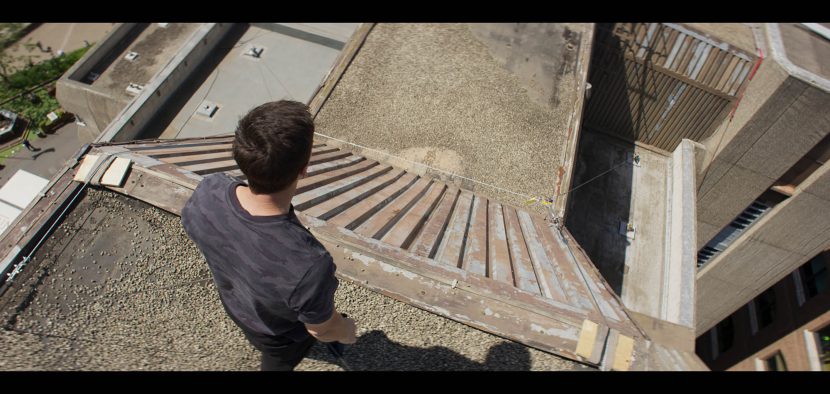
Cinesite for a more perfect (The) Union
www.fxguide.com
Netflixs The Union is the story of Mike, (Mark Wahlberg), a down-to-earth construction worker who is thrust into the world of superspies and secret agents when his high school sweetheart, Roxanne, (Halle Berry) recruits him for a high-stakes US intelligence mission.Mike undergoes vigorous training, normally lasting six months but condensed to under two weeks. He is given another identity, undergoes psychological tests, and is trained in hand-to-hand combat and sharpshooting before being sent on a complex mission with the highly skilled Roxanne. As one might expect, this soon goes south, and the team needs to save the Union, save the day, and save themselves.Julian Farino directed the film, Alan Stewart did the cinematography, and Max Dennison was Cinesites VFX supervisor. The film was shot on the Sony Venice using an AXS-R7 at 4K andPanavision T Series Anamorphic Lenses.Cinesites VFX reel:https://www.fxguide.com/wp-content/uploads/2024/10/Cinesite-The-Union-VFX-Breakdown-Reel.mp4During training Mike learns to trust Roxannes instructions in a dangerous running blind exersice. The precipitous drop makes the sequence really interesting and this was achieved by digital set removal so that the actors were not in mortal danger. Cinesites clean composting and colour correction allowed for the many car chase sequences and complex driving sequences in the film. This included a motorcycle chases, hazardous driving around London and a very complex three car chase.The three car chase with the BMW, Porsche and Ford was shot in Croatia and on this primarily used pod drivers or drivers sitting in a pod on top of the car doing the actual driving while the actors below simulating driving. We had to remove the pods, replace all the backgrounds, put new roofs on the cars replace the glass, and on some wider shots do face replacement when stunt drivers were actually driving the cars without pods, Max outlines. The team did not use AI or machine learning for the face replacements but rather, all the face replacements were based of cyber scans of the actual actors. This was influenced by the fact that in the vast majority of cases, the team didnt have to animate the actors faces, as the action sequences are cut so quickly and the faces are only partially visible through the cars windows. For for the motorbike chase above the motorbikes were driven went on location by stunt people whose faces were replaced with those of the lead actors. We had scans done of Mark and Halles faces so that we could do face replacement digitally through the visors of the helmets, explains Max Dennison. It is one of those films that liked to show London and all the sights of London, so we see Covent Garden, Seven Dials, Piccadilly Circus- a bit of a fun tourist trip, comments Max. Given the restrictions in being able to film on the streets of London the initial plan was to shoot in an LED volume. Apparently, the filmmakers explored this but preferred instead to shoot green screen and the results stack up very well. When Mike comes out of the Savoy hotel and drives on the wrong side of the road, all those exterior environments were replaced by us from array photography, he adds. Cinesite has a strong reputation for high end seamless compositing and invisible visual effects work, but in The Union the script allowed for some big action VFX sequences which are both exciting and great fun. The opening sequence of the suitcase exchange that goes wrong, the team was required to produce consistent volumetric effects as in the beginning of that sequence its raining and by the end it is not. Given that the shots were not shot in order, nor with the correct weather, the team had about 20 VFX shots to transition from mild rain to clearing skies through complex camera moves and environments around London.In addition to the more obvious big VFX work there was wire removal, set extension and cleanup work required for the action sequences. Shot in and around the correct crowded actual locations, there was still a need to use digital matte paintings, set extensions and apply digital cleanup for many of the exteriors. For the dramatic fall through the glass windows, stunt actors fell using wires and then the team not only replaced the wires but also did all of the deep background and 3D environments around the fall sequence. In the end the team also built 3-D class windows, as it was much easier to navigate the wire removal when they had control of the shattering glass. This was coupled with making sure that their clothes were not showing the harnesses or being pulled by the wires in ways that would give away how the shot was done.The film shot in New Jersey, (USA), London, (England), Slovenia, Croatia and Italy (street scenes). Principle photography was at Shepparton Studios, as the film was primarily London based. A lot of the stunt work was done in Croatia, at a studio set built for the film, especially for the roof top chase. Unlike some productions, the filmmakers sensibly used blue and green screen where appropriate allowing for the film to maximise the budget on screen and produce elaborate high octane action chase and action sequences. In total, Cinesite did around 400 shots. Much of this was Cinesite trademark invisible VFX work based on clever compositing, and very good eye matching of environments, lighting and camera focus/DOF.Given where the film finishes, perhaps this is the start of a Union franchise? Films such as The Union are fun engaging action films that have done very well for Netflix, often scoring large audiences even when not as serious or pretentious as the Oscar nominated type films that tend to gain the most publicity. And in the end this is great work for the VFX artists and post production crews.
0 Comments
·0 Shares
·189 Views


